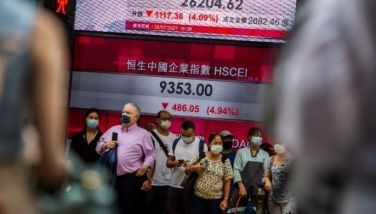Solution to MM’s traffic woes

(First Part)
Of 387 metro areas worldwide, why does Metro Manila have to hold the distinction of having the worst traffic congestion?
According to multinational traffic data provider TomTom International, local motorists spent an average travel time of 25 minutes and 30 seconds per 10 kilometers in the metro area last year, a 50 percent increase from its previous record. This travel time can stretch to up to 35 minutes and 30 seconds per 10 kilometers on Fridays from 5 to 6 p.m.
Filipino drivers and commuters were on the road for about 240 hours in 2023 and of this, 117 hours of extra time were spent driving in rush hours. Average speed in rush hour driving in Manila was 21 km/hour during morning rush and 17 km/h in the evening.
This is also bad for the environment. The same 2023 report revealed that 1027 kg of carbon dioxide were emitted yearly, of which 304 kg was due to traffic congestion.
A study by the Japan International Cooperation Agency (JICA) revealed that the traffic congestion in Metro Manila alone is costing the Philippine economy at least P3.5 billion per day or P1.27 trillion annually. And without effective intervention, this cost will increase to P5.4 billion daily or P1.97 trillion per year by 2035.
According to President Marcos, the traffic congestion in Metro Manila is a severe problem that requires a comprehensive and holistic solution, adding that sadly, it is a part of every Filipino’s life and we cannot deny that traffic here in the country is notorious worldwide.
He recently ordered a thorough and all-encompassing strategy to address the traffic congestion in Metro Manila.
There is no doubt that one of the primary causes of traffic density within Metro Manila is the current transportation infrastructure. Metro Manila and the country as a whole for the longest time had a road-based public transportation system, consisting of privately owned tricycles, taxis, buses and jeepneys that account for more than half of daily commuting trips. Car travel accounted for 30 percent but constitutes 72 percent of road traffic.
JICA has reported that the Philippines is currently implementing major railway infrastructure projects in cooperation with JICA that include the Metro Manila Subway, North-South Commuter railway system, MRT-3 rehabilitation and capacity enhancement of LRT Lines 1 and 2. It noted however that further expansion of railway systems to form a transport network is considered a prerequisite for the country’s development.
JICA and the Department of Transportation have agreed last year to prepare a 30-year railway master plan for the greater capital region that aims to develop a network of railway lines, increase Philippine railways’ modal share of passenger trips, and increase the country’s rail routes.
To solve Metro Manila’s traffic woes, there is a need to change the mindset from road-based travel to mass transport and one that is rail-based. And it should be one that is operated by the private sector which is proven to be more efficient in operating and maintaining mass transit systems, even in other countries like Japan.
After all, railway is the most sustainable and cleanest with no dirty emissions. They can carry the most number of people in the shortest amount of time in very large capacities. One train can carry over 1,200 passengers every 2.5 minutes.
Many Filipinos have experienced efficient rail transport in Japan, Hongkong and Singapore and we deserve the same type of convenience. I spent almost a week in Japan recently and for our entire stay, we travelled by train not only because it was convenient, and cheap and fast, but also because availing of other modes like taxis is very expensive.
One of the fastest solutions to the Metro Manila traffic problem is the integration of our rail systems, the creation of a closed loop train operation and the development of integrated transport terminals and transit-oriented developments with the railway stations to improve first and last mile connectivity.
Almost all developed cities have integrated circle “closed loop” railways in the center of the city. And while Metro Manila already has that, they are not connected.
In fact, we don’t even have to wait for the new rail projects to operate to realize an improvement in the traffic situation. Based on traffic studies, it was revealed that integrating MRT-3 and LRT-1 as a closed loop or a circle line with integrated operations alone can result in a 20 percent reduction in vehicles along EDSA and will save 20 minutes reducing transfers to and from the two rail systems.
A survey revealed that around 88 percent of MRT-3 passengers also used LRT-1 so imagine the benefits that can be realized from integrating the two.
LRT-1, one of the busiest transport options in Metro Manila, is currently operated by Metro Pacific Investments Corp.-led Light Rail Manila Corp. (LRMC) and will expand to Cavite soon. On the other hand, MRT-3 is being operated and maintained by the Sobrepena-led Metro Rail Transit Corp. and its agreement with the DOTr expires next year.
MPIC earlier submitted an unsolicited proposal to manage MRT-3. And just last January, MPIC chairman, president and CEO Manuel V. Pangilinan declared his intention to partner with San Miguel Corp.’s Ramon Ang to handle the railway line. Ang is said to be very interested given that operating MRT-3 will complement the MRT Line 7 that SMC is building. (To be continued)
For comments, email at [email protected]
- Latest
- Trending

























